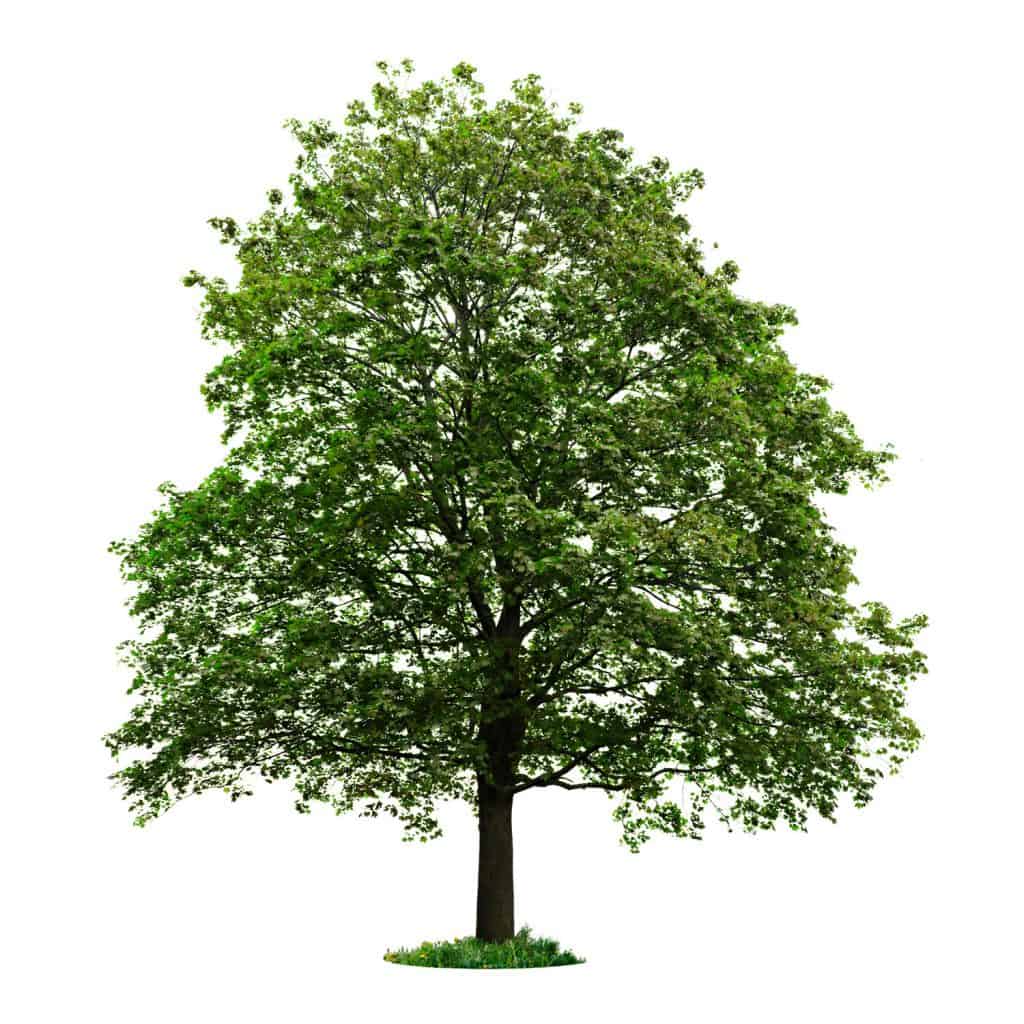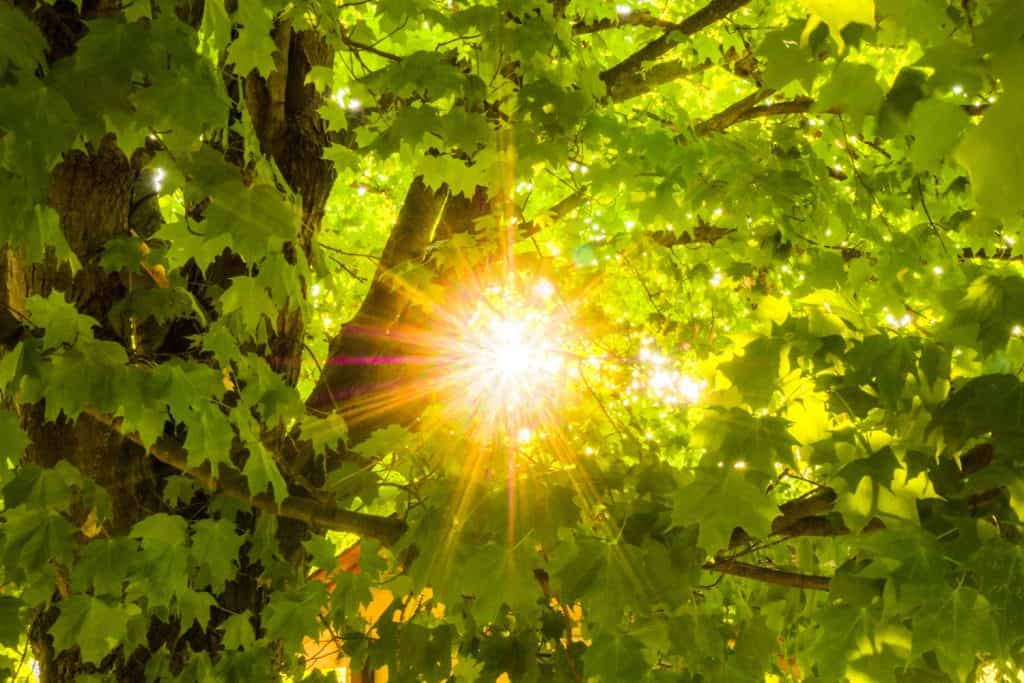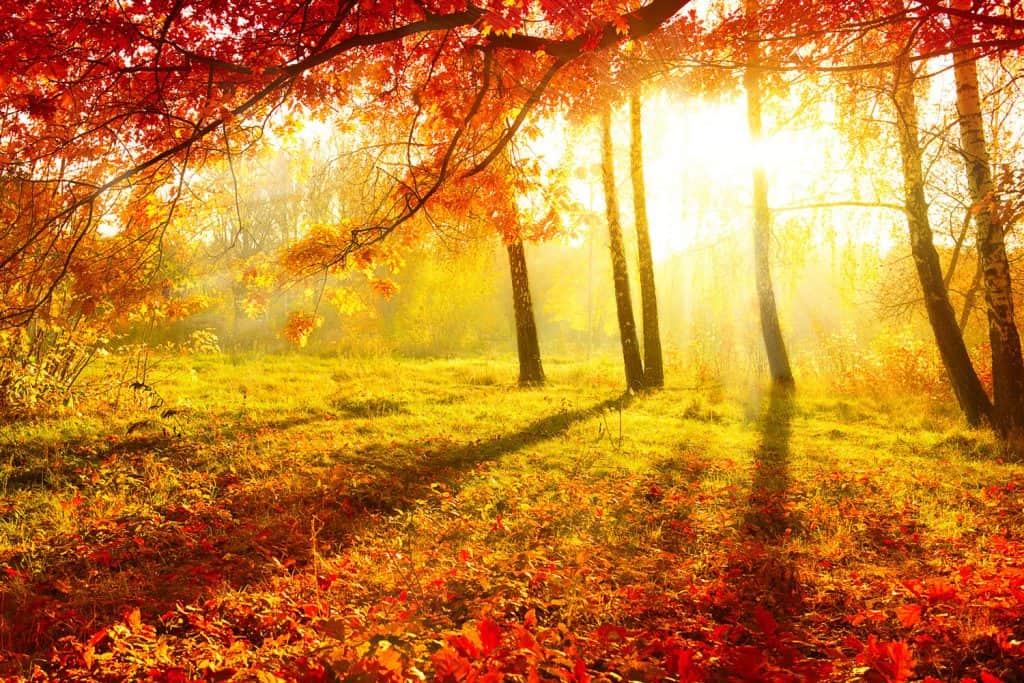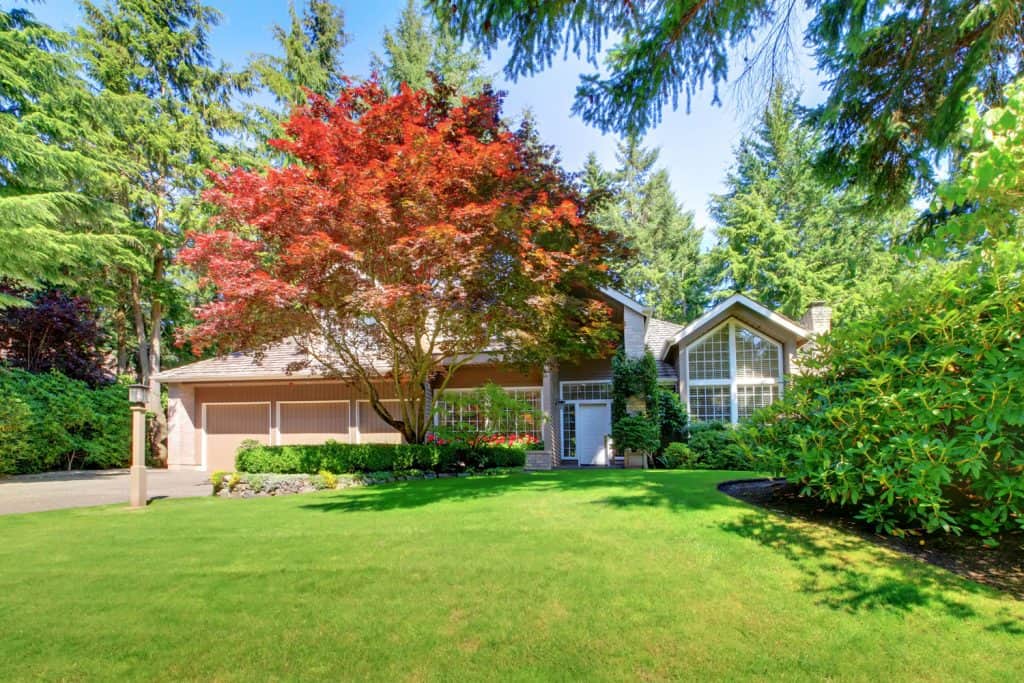Maple trees make for beautiful shady additions to most lawn landscapes. However, before you plant your tree, you are wondering if the maple tree will kill your lawn or make your soil acidic. You have come to the right place! In this post, we thoroughly answer your question using up-to-date information.
Mature maple trees can kill the grass immediately around the trunk and out to the dripline of the tree. However, this effect is not due to acidification. Rather, the shallow roots of some maple trees species rob the grass of moisture and nutrients while the thick canopy of leaves shades the grass from the sun.
Read the rest of this post to learn the details of how maple trees and lawn grass interact. We also discuss the details of how maple trees affect soil pH. In addition, we discuss how to grow grass around difficult maple trees as well as the answers to some related questions.

When Maple Trees Kill Grass
Some maple trees exhibit growth patterns that include very shallow roots and a very thick canopy. When present, the shallow roots not only have far-reaching roots but also small hairlike roots that rise all the way to the surface. It is partially this all-out rooting strategy that allows the canopies of maple trees to grow abundant leaves that blot out the sun.

These growth patterns mean that when these types of maple trees are healthy, the grass around their base cannot get the water, nutrients, and sun they need to thrive. Common maple tree species that kill grass include Norway Maple Trees and Silver Maple Trees.
In addition to the shallow roots and large canopy, maple trees can hinder the growth of grass in another way. Namely, if the fall blowdown of leaves is left to sit on the ground, it will smother the grass, eventually killing it.

Before planting a maple tree on your lawn, take the time to research the specific maple tree species and its root growth patterns. This research might require internet searches, calls to your local extension office, and/or visits to a local plant nursery. It is likely that you will find information documenting how your specific tree interacts with grass. Make sure to choose a tree species that grows well with lawns.
Do maple trees kill other plants?
In addition to grass, the process described above also allows maple trees to outcompete and kill other plants. If grass cannot get the proper nutrients, water, and sun, it is unlikely that other types of small plants will be able to thrive.
That being said, there are a few plants that are reported to be able to survive even under a very large and healthy maple tree. These include monkey grass and early season bulb flowers such as crocuses. The crocuses are able to grow because they sprout before the maple tree has fully leafed out. This seasonality allows these beautiful spring flowers the sun that they need.
Click here for a great raised bed container from Amazon.
Finally, it is possible to place potted plants under a maple tree. The pots isolate the soil from the maple tree roots. However, the maple tree canopy will still shade the plants in the summer. To account for this, be sure to choose shade-tolerant plants and to fertilize and water as recommended for the plant.
Do maple trees make the ground acidic?
Soil pH is a measure of acidity. There is an old myth that the leaves of maple trees will cause soil to become more acidic. Instead, modern science has shown us that maple trees are only passive actors when it comes to soil acidity.
The belief that maple trees change soil acidity mainly stems from the acidic nature of maple leaves when they turn red, orange, or yellow in the fall season. The logic went that as the fall leaves decomposed they would add their acidity to the soil.

However, and as discussed in this article from Horticulture Magazine, the soil buffers the leaf acidity. In short, natural decomposition processes mean that even though the rotting material is acidic, the soil stays at the same pH.
The passive interaction between maple trees and soil acidity means that certain maples prefer specific acidity levels but do not change the level of the soil. In fact, slightly acidic soils to neutral soils are preferred by most maple trees. You can even change the color of your maple's fall foliage by changing the soil acidity. Read more about this phenomenon here in an article published by the Washington State University.
Will grass grow under a Japanese maple?
Japanese maples are unique for many reasons. For the lovers of lawns, the most important unique feature is their size. Japanese maples are most often much smaller than many of their larger maple cousins. For this reason, they are far more friendly to grass. This is because a small tree requires fewer nutrients and water than a larger tree.

Even though grass can grow under some Japanese maples, it is important to note that grass will always grow better in the absence of competition (and so will your tree). That is to say, all trees and grasses are interested in the same light, moisture, and nutrients but can sometimes coexist.
Do trees steal nutrients from grass?
As implied above, all trees steal nutrients from grass, not just maple trees. However, because of the different growth patterns and nutrient requirements of different species of trees. Some trees are far better suited to lawn landscapes than others.
How do you grow grass around a maple tree?
While there is no 100% effective way to grow grass under a maple tree, there are several steps you can take to help encourage your grass's growth. They include heavily seeding with grass seed each fall, thinning your maple tree's branches, adding mulch and/or topsoil around your maple tree, raking under your maple regularly, planting shade-tolerant grass, adding extra fertilizer, watering more often, and keeping the grass under your tree a bit longer.
To learn more about growing grass from Garden Tabs, read these two great articles: 11 Perennial Ryegrass Facts For Lawn Owners and What’s The Best Grass For Shade In Texas?
Overseed Each Fall
The best time to add grass seed is always in the fall before the weather really turns cold. This way, the seeds have a chance to work into the ground before they sprout the following spring. For areas under maple trees, seed heavily to overcompensate for the poorer growing conditions.
Thin Maple Tree Branches
Click here for an electric pole saw from Amazon.
As discussed above, one of the main barriers to growing grass under a maple tree is the solid wall of shade a maple tree creates. By thinning the branches of your tree out, you can artificially allow more light the reach the ground. This light then helps your grass grow and can also provide an attractive dappled sunlight look.
Add Mulch and/or Topsoil
When trying to encourage grass to grow under a maple tree, many add mulch and/or topsoil to provide additional habitat for the grass to grow in. This strategy is effective but must be refreshed every year to every several years. While the grass may root first into the new soil, the maple tree roots will eventually take back over.
Rake Regularly
To encourage your grass to grow, take the time to regularly rake any leaves that fall from the tree. In addition, remove large branches and other blowdowns. These steps will help ensure that the grass will not get needlessly smothered and will receive as much sunlight as possible.
Plant Shade-Tolerant Grasses
Different grass species thrive in different climates and environments. However, it is always smart to plant shade-tolerant grasses under maple trees. This means that the grass has a better chance of getting the sun it needs to thrive. An example of a shade-tolerant grass species is Fine Fescue.
Fertilize More Often
Since your maple tree and your grass are both using the same limited amount of nutrients, adding more fertilizer can alleviate the competition. It is recommended that you add fertilizer specifically designed for your grass. Even if you are fertilizing your whole lawn, add extra under your maple trees.
Click here for grass fertilizer from Amazon.
In addition to fertilizer, adding compost under your maple trees may also help your grass grow. The compost adds beneficial nutrients and microorganisms. Those microorganisms help break down the compounds in the soil which makes it easier for your grass to take the nutrients it needs up.
Water More Often
Just like with fertilizer, if you water under your maple tree more often, there is a higher chance that your grass will be able to get enough water to survive. Be careful, overwatering the area will turn your yard into a mudpuddle which will also be bad for your lawn.
In Closing
In this post, we answered the question of whether the grass will grow under maple trees and whether maple trees make the soil acidic. We also answer a few related questions and provide a handy list of ways to help the grass grow under maple trees. Good luck!



